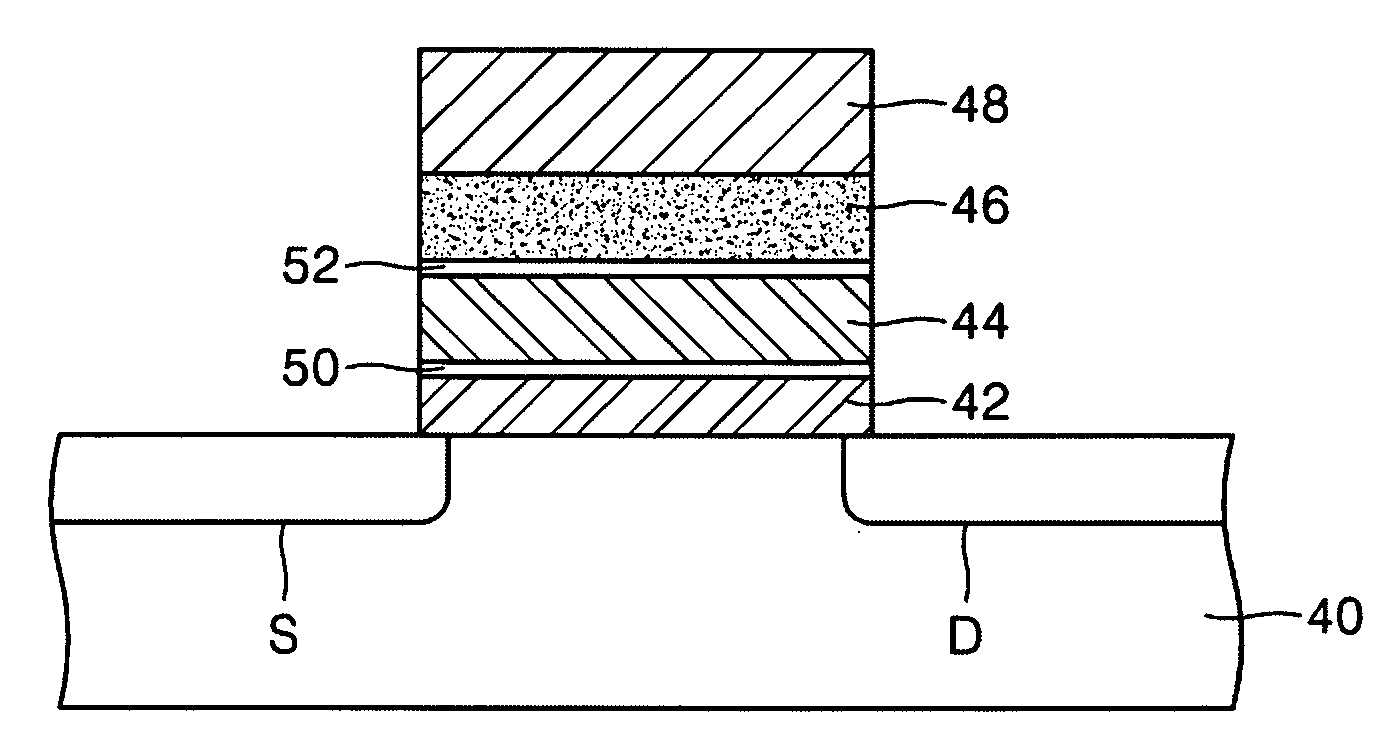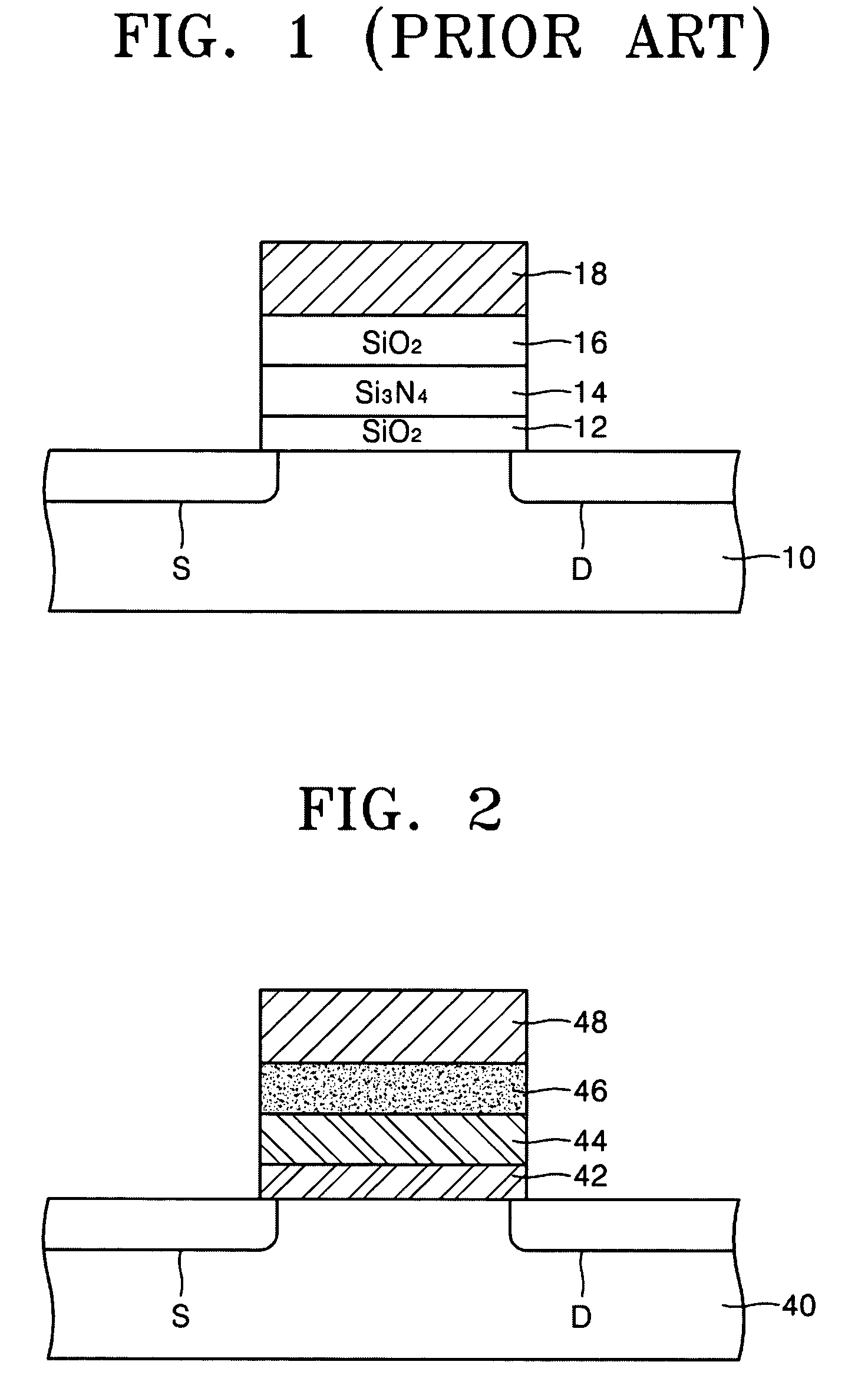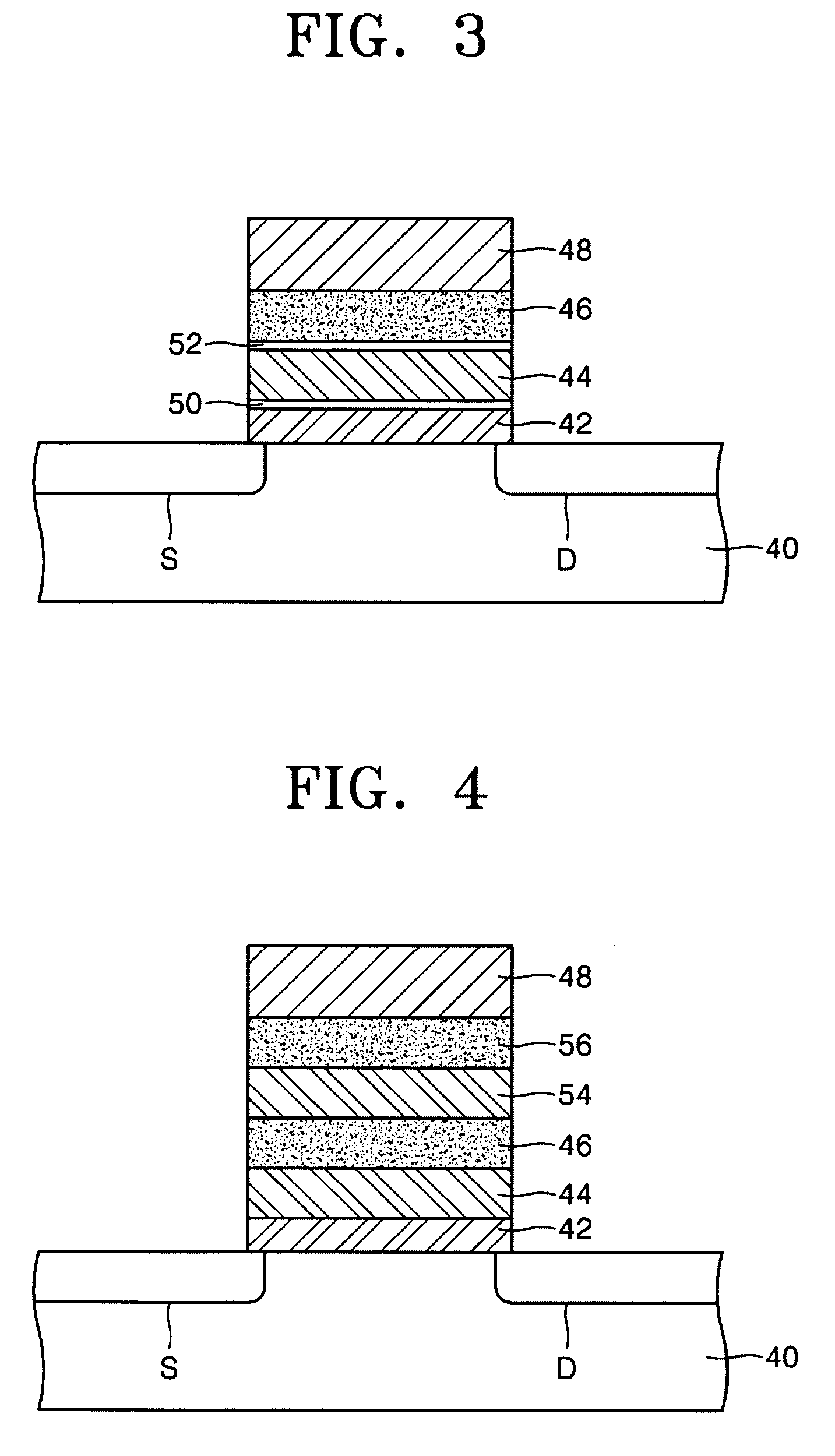Nonvolatile semiconductor memory device having a gate stack and method of manufacturing the same
a semiconductor memory and gate stack technology, applied in the field of semiconductor memory devices, can solve the problems of low retention characteristic of flash memory, data cannot be kept safe, and the speed of writing/erasing data becomes much slower than the desired speed, so as to achieve effective control of trap density and increase the operating speed
- Summary
- Abstract
- Description
- Claims
- Application Information
AI Technical Summary
Benefits of technology
Problems solved by technology
Method used
Image
Examples
first embodiment
[0037]Referring to FIG. 2, a source region S and drain region D are formed on a substrate 40 and separated by a predetermined distance. A space between the source region S and the drain region D on the substrate 10 defines a channel region. A gate stack is formed on the channel region. The gate stack is formed of the following layers deposited sequentially. First, a tunneling oxide film 42 is provided on the channel region. One end of the tunneling oxide film 42 contacts the source region S and another end of the tunneling oxide film 42 contacts the drain region D. A first trapping material layer 44 is formed on the tunneling oxide film 42. A first insulating film 46 having a high dielectric constant is formed on the first trapping material layer 44. Finally, a gate electrode 48 is formed on the first insulating film 46.
[0038]When a predetermined voltage is applied to the gate electrode 48 and the drain region D, the first trapping material film 44 traps a charge, i.e., electrons, w...
second embodiment
[0042]The second embodiment is related to a nonvolatile semiconductor memory device having a diffusion barrier layer on and under the first trapping material film 44.
[0043]In the following, the same reference numerals as in the first embodiment describe the same elements.
[0044]Referring to FIG. 3, a first oxide film 50, serving as a first diffusion barrier layer, is formed between the tunneling oxide film 42 and the first trapping material film 44. The first oxide film 50 may be an aluminum oxide film. The thickness of the tunneling oxide film 42 may be approximately 1˜4 nm, and that of the first oxide film 50 may be approximately 0.5˜2 nm. The phrase “tunneling film” as used herein is defined as the tunneling oxide film 42 in combination with the first oxide film 50.
[0045]A second oxide film 52, serving as a second diffusion barrier layer, is formed between the first trapping material film 44 and the first insulating film 46. The second oxide film 52 may be an aluminum oxide film, ...
third embodiment
[0047]The third embodiment is related to a nonvolatile semiconductor memory device including a gate stack formed on a channel region of a substrate 40 and having a plurality of trapping material films.
[0048]Referring to FIG. 4, the first trapping material film 44 and the first insulating film 46 are formed on the tunneling oxide film 42. A second trapping material film 54 and a second insulating film 56 are sequentially deposited on the first insulating film 46. The gate electrode 48 is formed on the second insulating film 56. The second trapping material film 54 may be formed of an insulating film of doped lanthanide having a high dielectric constant, e.g., of the same material as that of the first trapping material film 44. Alternatively, the second trapping material film 54 may be formed of other insulating films. Likewise, the second insulating film 56 may be formed of the same insulating material film as the first insulating film 46. Alternatively, the second insulating film 56...
PUM
 Login to View More
Login to View More Abstract
Description
Claims
Application Information
 Login to View More
Login to View More - R&D
- Intellectual Property
- Life Sciences
- Materials
- Tech Scout
- Unparalleled Data Quality
- Higher Quality Content
- 60% Fewer Hallucinations
Browse by: Latest US Patents, China's latest patents, Technical Efficacy Thesaurus, Application Domain, Technology Topic, Popular Technical Reports.
© 2025 PatSnap. All rights reserved.Legal|Privacy policy|Modern Slavery Act Transparency Statement|Sitemap|About US| Contact US: help@patsnap.com



